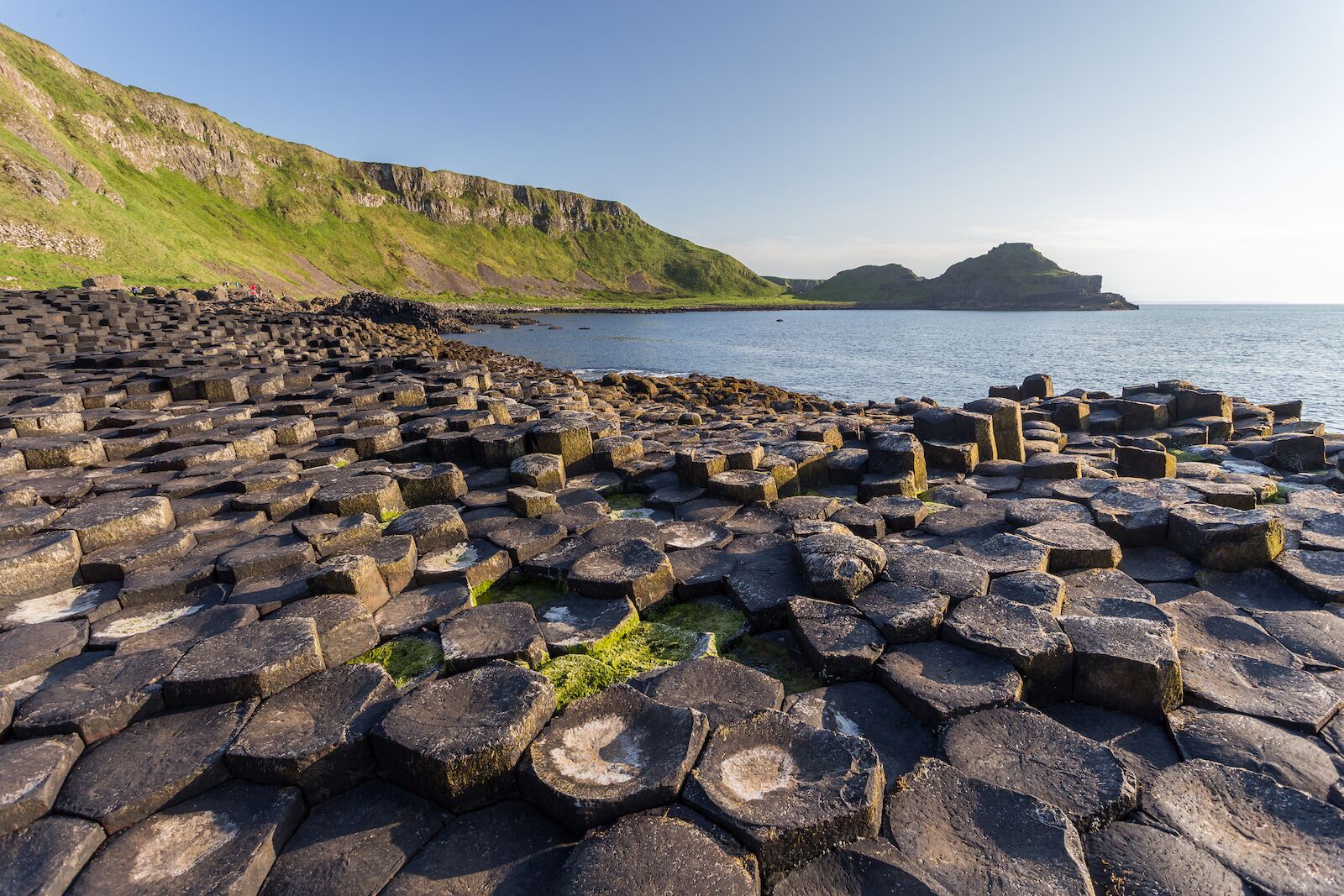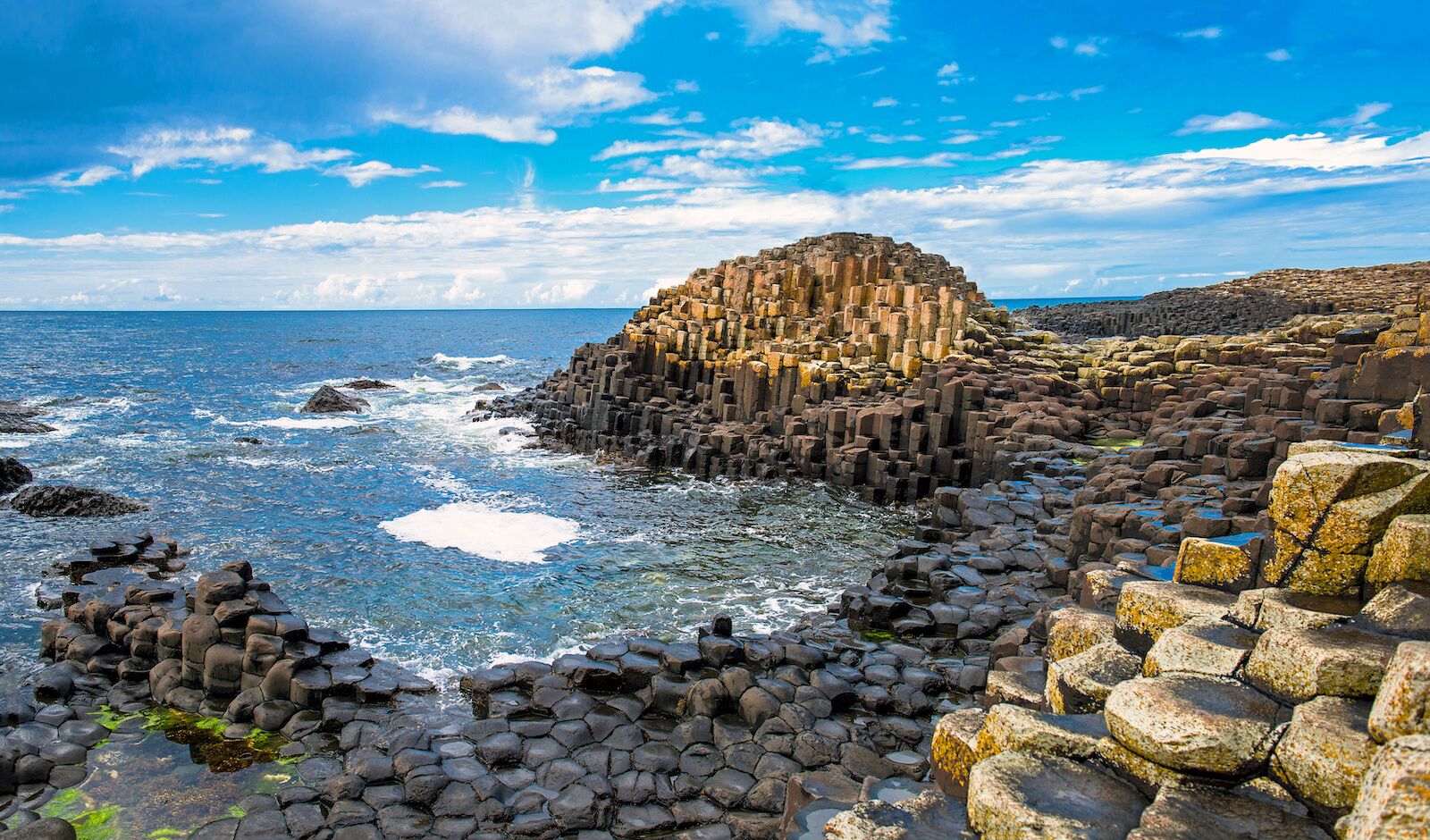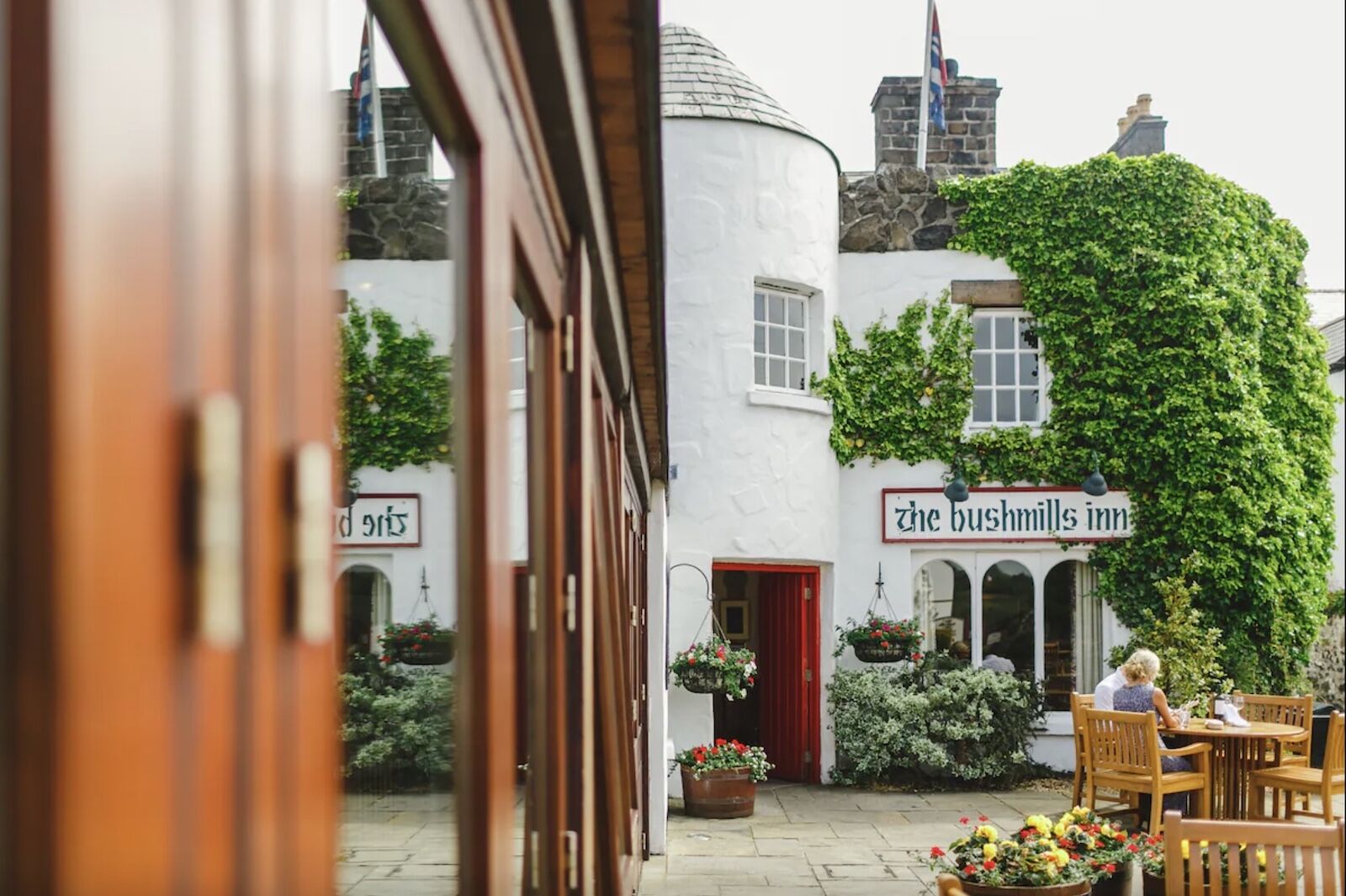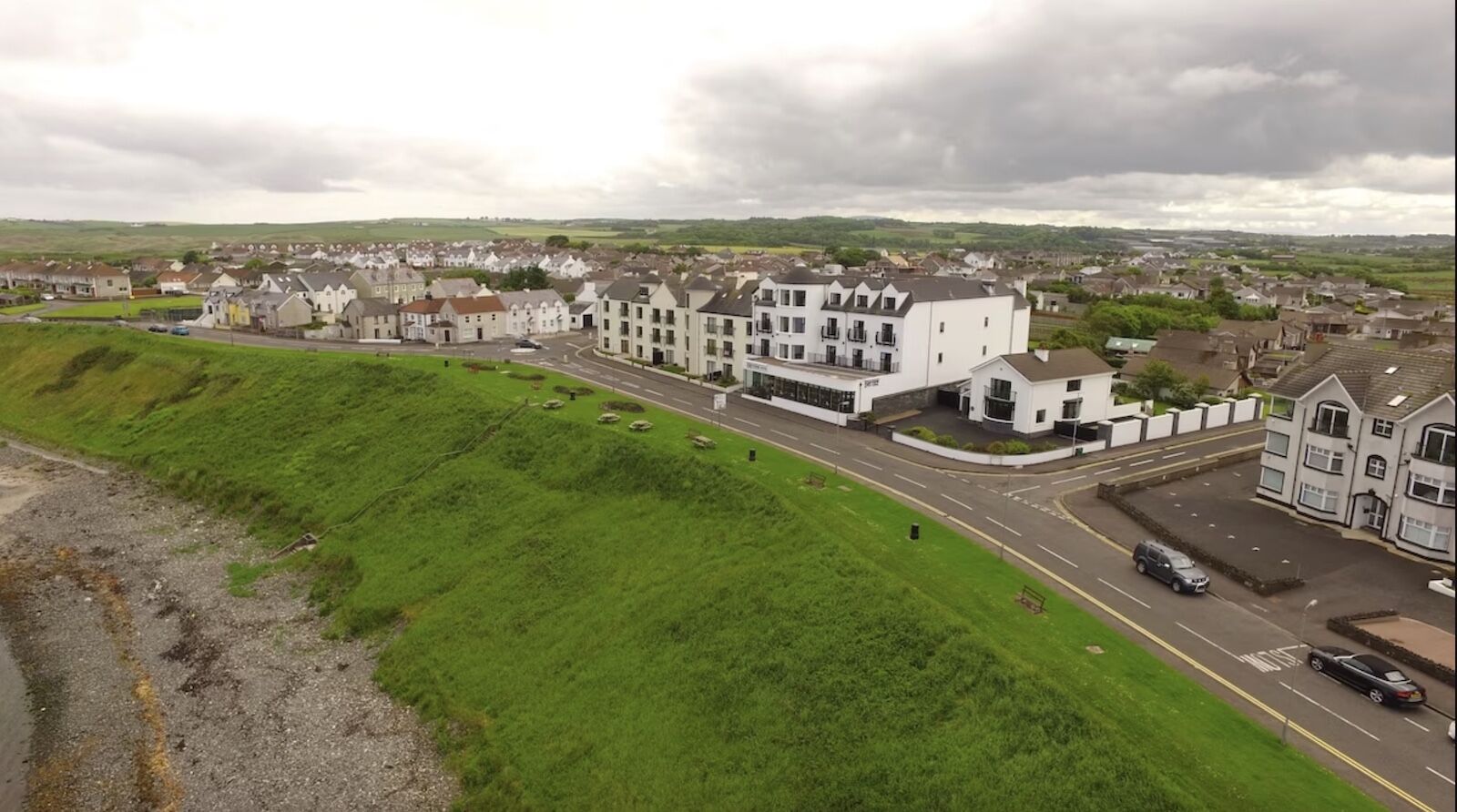After you’ve taken a Black Taxi tour of the Northern Irish capital and checked out the world famous Titanic Belfast, make your way to the Giant’s Causeway. The only UNESCO World heritage site in Northern Ireland, this 6o-million-year-old rock formation seems straight out of a fantasy novel. And the best part is that you can visit this incredible place for free.


Legend Says That a Giant Created This Perfectly Patterned 60-Million-Year-Old Rock Formation
- What is the Giant’s Causeway?
- Where is the Giant’s Causeway?
- How far from Belfast is the Giant’s Causeway? How can I get there from Belfast?
- How far from Dublin is the Giant’s Causeway? How can I get there from Dublin?
- How was the Giant’s Causeway formed?
- What type of rock is the Giant’s Causeway made of?
- Six facts about the Giant’s Causeway
- What is the legend of the Giant’s Causeway?
- Can you visit the Giant’s Causeway for free?
- How long does it take to visit the Giant’s Causeway?
- What is the rope bridge near Giant Causeway?
- Hotels near the Giant’s Causeway
What is the Giant’s Causeway?

Photo: Kanuman/Shutterstock
The Giant’s Causeway is the site of a formidable and fascinating rock formation that is about 60 million years old. What makes this particular rock formation special is the pattern and shapes that it takes: Hexagonal columns of varying heights that seem perfectly assembled despite the lack of human intervention.
Where is the Giant’s Causeway?
The Giant’s Causeway is located in Northern Ireland. More specifically, it is on the north coast of County Antrim, in the village of Bushmills, which is well known to be home to a famous Irish Whiskey distillery.
How far from Belfast is the Giant’s Causeway? How can I get there from Belfast?
The Giant’s Causeway is 60 miles north of Belfast, and the trip takes around one hour and 15 minutes by car. If you want to use public transport, you can take the train from Belfast to the town of Portrush (1.5 hours) and from there you can grab a direct bus to the Giant’s Causeway (around 40 minutes). Not all the trains from Belfast to Portrush are direct and you may need to connect in the town of Coleraine to reach Portrush. Use Translink to look up train timetables and book your ticket.
How far from Dublin is the Giant’s Causeway? How can I get there from Dublin?
The Giant’s Causeway is over 160 miles north of Dublin, and the trip takes around three hours and 15 minutes by car. Travelers from Dublin should plan ahead and arrive the day before they wish to visit the Giant’s Causeway to have more time on site. That is especially true for those who are using public transport. Getting from Dublin to Belfast by train is direct and takes about two hours and fifteen minutes. Getting from Belfast to the Giant’s Causeway takes another couple of hours. Refer to the “How can I get from Belfast to the Giant’s Causeway?” section above for more information.
How was the Giant’s Causeway formed?

Photo: Lyd Photography/Shutterstock
The Giant’s Causeway was formed around 60 million years ago by volcanic activity that occurred when Europe separated from North America. As the lava flowed, it cooled and contracted, cracking into regular shapes and forming distinctive interlocking hexagonal columns of basalt rock. Over time, natural forces such as erosion and the pounding of waves have sculpted the columns to form seemingly perfect stepping stones.
What type of rock is the Giant’s Causeway made of?
Giant’s Causeway is made of basalt. Basalt is a dark volcanic rock that is created when molten lava cools and solidifies.
Six facts about the Giant’s Causeway
- The Giant’s Causeway is the only UNESCO World Heritage site in Northern Ireland. It was designated as such in 1986.
- Long before the site was listed by UNESCO, stones from the Giant’s Causeway were sold to tourists as souvenirs.
- UK’s National Trust owns, manages, and protects the site since 1961.
- There are 40,000 columns of basalt that make up the Giant’s Causeway.
- The Irish name for the Giant’s Causeway is Clochán an Aifir.
- Geological formations very similar to that of the Giant’s Causeway can be found throughout the world, including in Scotland, Iceland, Spain, and many more locations.
- In 2017, the Giant’s Causeway reported one million visits, making it the most popular attraction in Northern Ireland.
What is the legend of the Giant’s Causeway?
There are two legends about the creation of the Giant’s Causeway, both of which are involving the Irish giant Fionn Mac Cumhaill (anglicized as Finn McCool).
The first legend says that Fionn Mac Cumhaill built a path to cross the Irish sea to fight his enemy, the Scottish giant Benandonner. Benandonner is said to have destroyed the path while fleeing his rival, resulting in the causeway we know today.
The second legend says that Fionn Mac Cumhaill, the same Irish giant, built the causeway to be united with his beloved in Scotland. Using her magical powers Fionn’s grandmother created a storm that destroyed his work, thus preventing him from leaving. The giant, rebuilt it again and again, undeterred by the difficulty of the task, while his grandmother kept hindering his progress. Eventually, Fionn Mac Cumhaill did manage to build the path across the Irish Sea, but he died from exhaustion after completing it.
Can you visit the Giant’s Causeway for free?

Photo: Sergii Figurnyi/Shutterstock
Yes, access to the Giant’s Causeway is free, but you won’t be able to use the parking lot which is reserved for visitors having purchased a Visitor Experience ticket.
The Visitor Experience ticket includes reserved parking, a guided tour, an audio guide, access to the Visitor Centre’s exhibition and interpretation area, and all other facilities.
The Visitor Experience ticket costs $16.80 (£13.50) for adults and $8.40 (£6.75) for children aged between five and 17. In peak season, adults pay $18.65 (£15.00) and children pay $9.30 (£7.50). Discounts are available for families.
If you prefer a different kind of tour, you can also book the Giant’s Causeway Clifftop Experience. This five-mile hiking tour is 3.5 hours long, costs $48.45 (£39) per person, and includes the full Visitor Experience detailed above.
How long does it take to visit the Giant’s Causeway?
Budget between three hours and half a day to visit the Giant’s Causeway, see the various rock formations (including the Giant’s Boot, the Organ Pipes, and the Wishing Chair), and explore the several miles of hiking trail around the site. The site is open from dawn until dusk, so you can stay all day if you wish. The parking lot and the Visitor’s Center, however, close by 4 PM or 5 PM depending on the season.
What is the rope bridge near Giant Causeway?

Photo: Lautz/Shutterstock
Carrick-a-Rede is a 65-foot-long rope bridge suspended 100 feet above the ocean linking the coast to the island of Carrick-a-Rede. The bridge is part of a 1.2-mile coastal walk. There has been a bridge in this location since 1755.
The rope bridge is less than 10 miles east from the Giant’s Causeway and can easily be reached by car or bus.
A ticket to cross Carrick-a-Rede costs $16.80 (£13.50) for adults and $8.40 (£6.75) for children aged between five and 17). In peak season adults pay $18.65 (£15.00) and children pay $9.30 (£7.50). Discounts are available for families.
Hotels near the Giant’s Causeway
We hope you love the spaces and stays we recommend! Just so you know, Matador may collect a small commission from the links on this page if you decide to book a stay.
The Bushmills Inn
This four-star luxury boutique hotel located in the village of Bushmills, is a seven-minute drive or a 45-minute walk to the Giant’s Causeway. The 41 rooms and suites of the historic Bushmills Inn are decorated in an elegant and traditional style, creating a cozy and homely atmosphere for its guests. There is an award-wining restaurant on side, the Bushmills Inn Restaurant, as well as a bar, the Gas Bar. The hotel also offers a classic and exquisite afternoon tea.
Bayview Hotel
The Bayview Hotel is a four-star hotel that’s located 10 minutes away from the Giant’s Causeway by car and about 50 minutes away on foot. Like its name indicates, this property is on the coast, with views of the Irish Sea. The Bayview Hotel has 25 luxurious bedrooms and a three-bedroom seaside cottage, allowing guests who are looking for peace and quiet to have an intimate, pampered, and very private stay. There is a restaurant on site offering breakfast, lunch, and dinner, as well as a small spa where guests can indulge in massages and reflexology treatments.
Causeway Hotel
The Causeway Hotel is the closest hotel to the Giant’s Causeway. Owned by the National Trust, this 19th-century, three-star property has 28 en-suite rooms, all with views of the Atlantic Ocean, or with a private terrace with views of the surrounding landscape. Fully renovated in 2016, the hotel’s interior decor is simple, yet elegant. There is a free cooked-to-order breakfast, as well as a restaurant and a bar on site.








